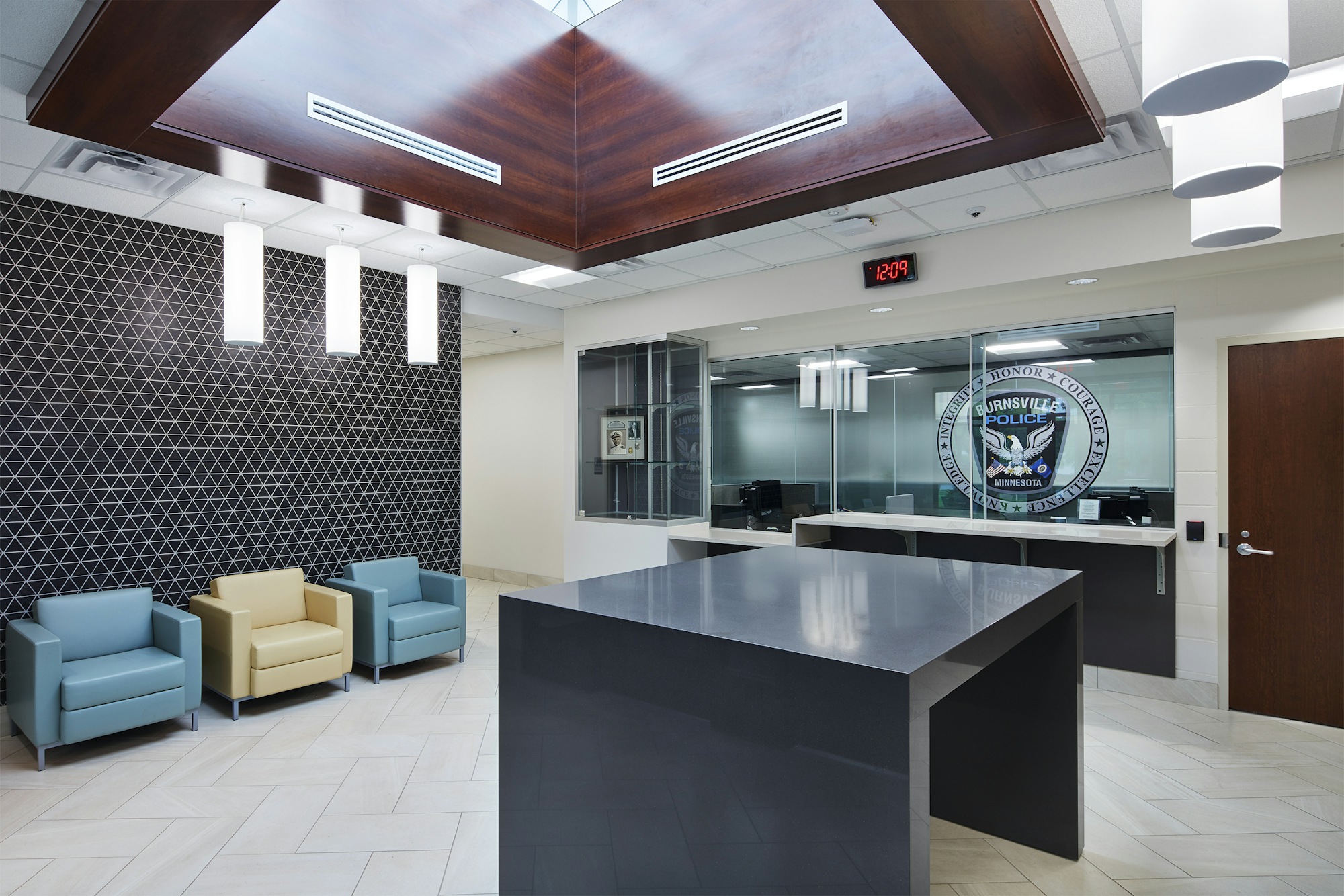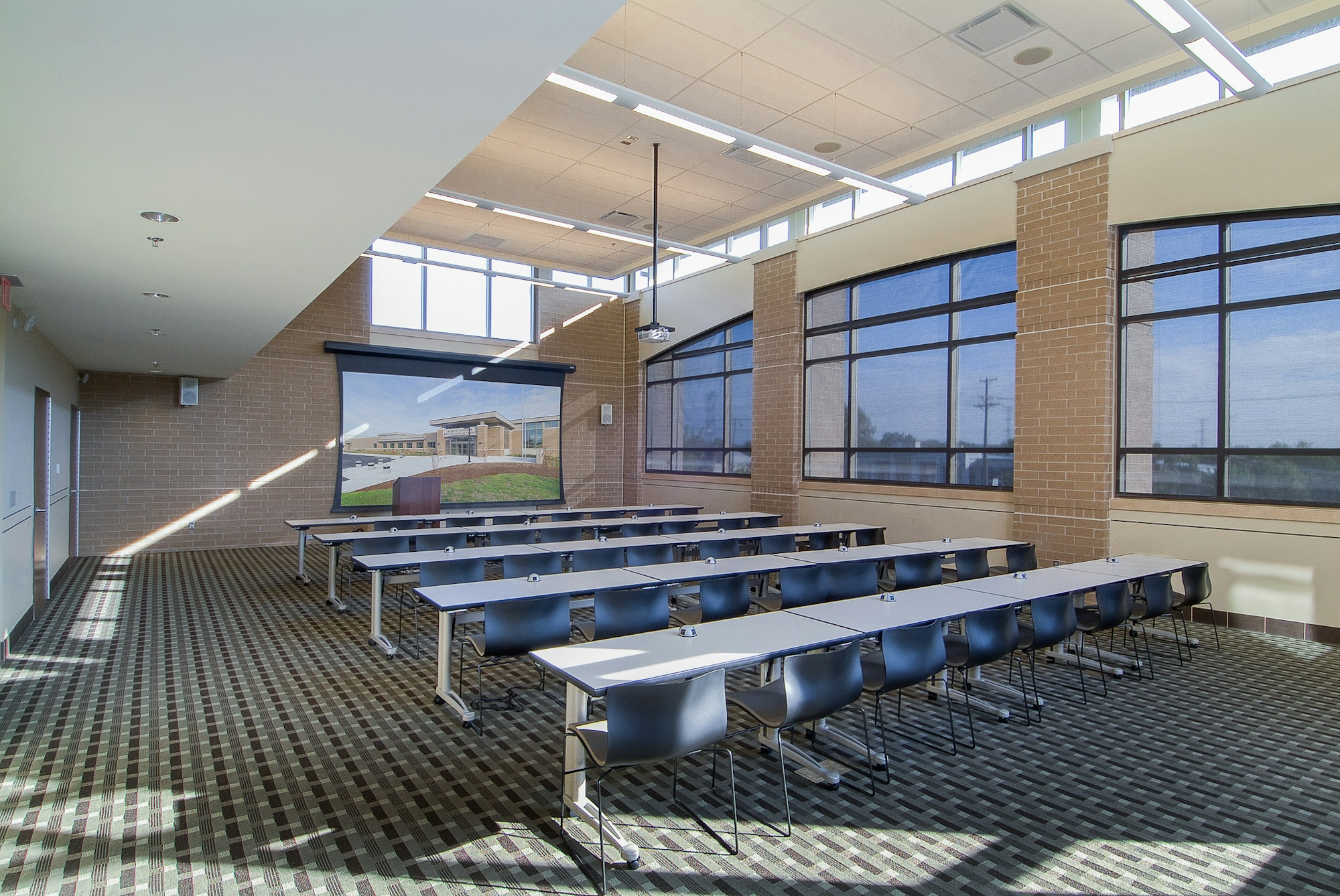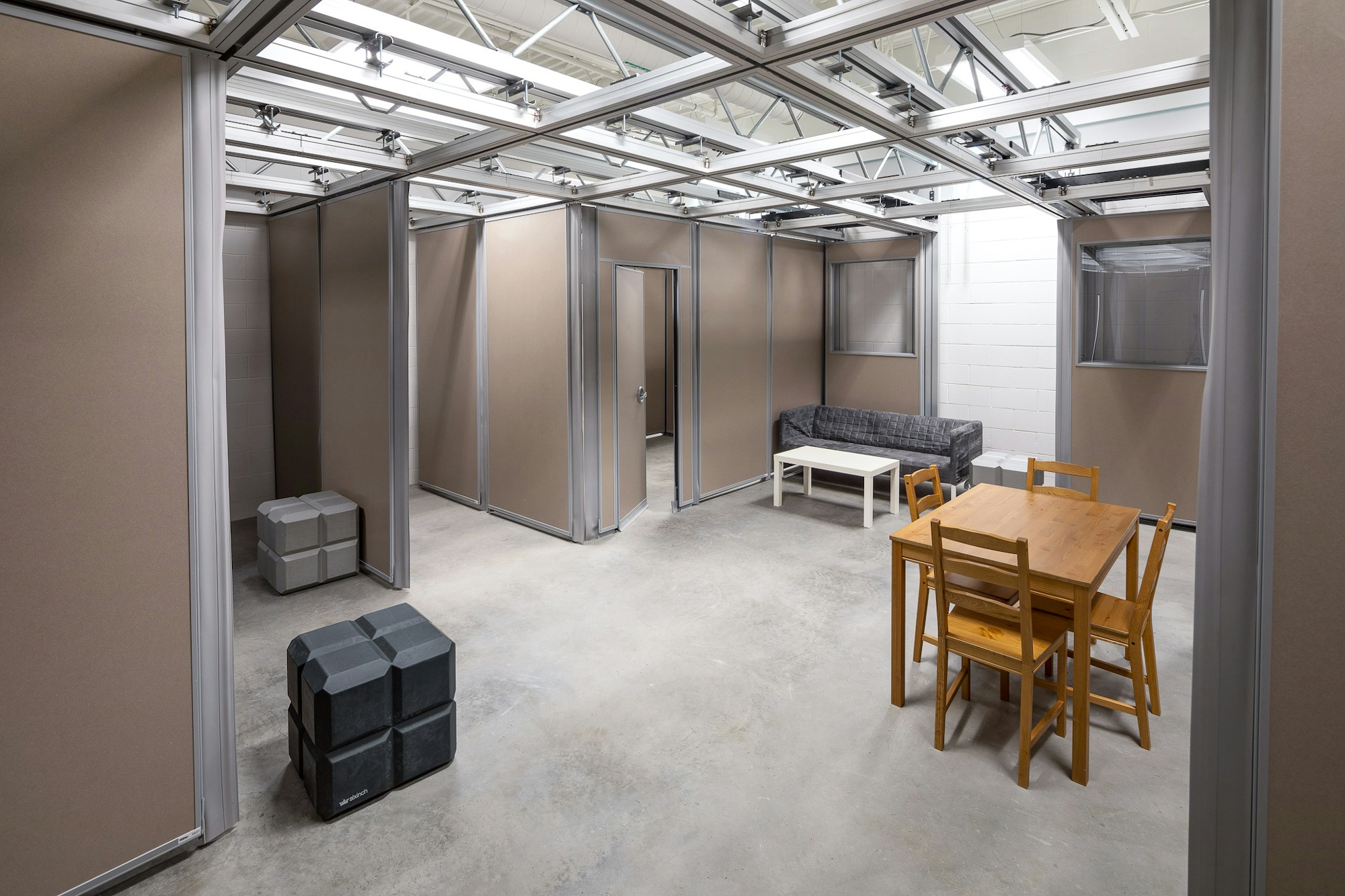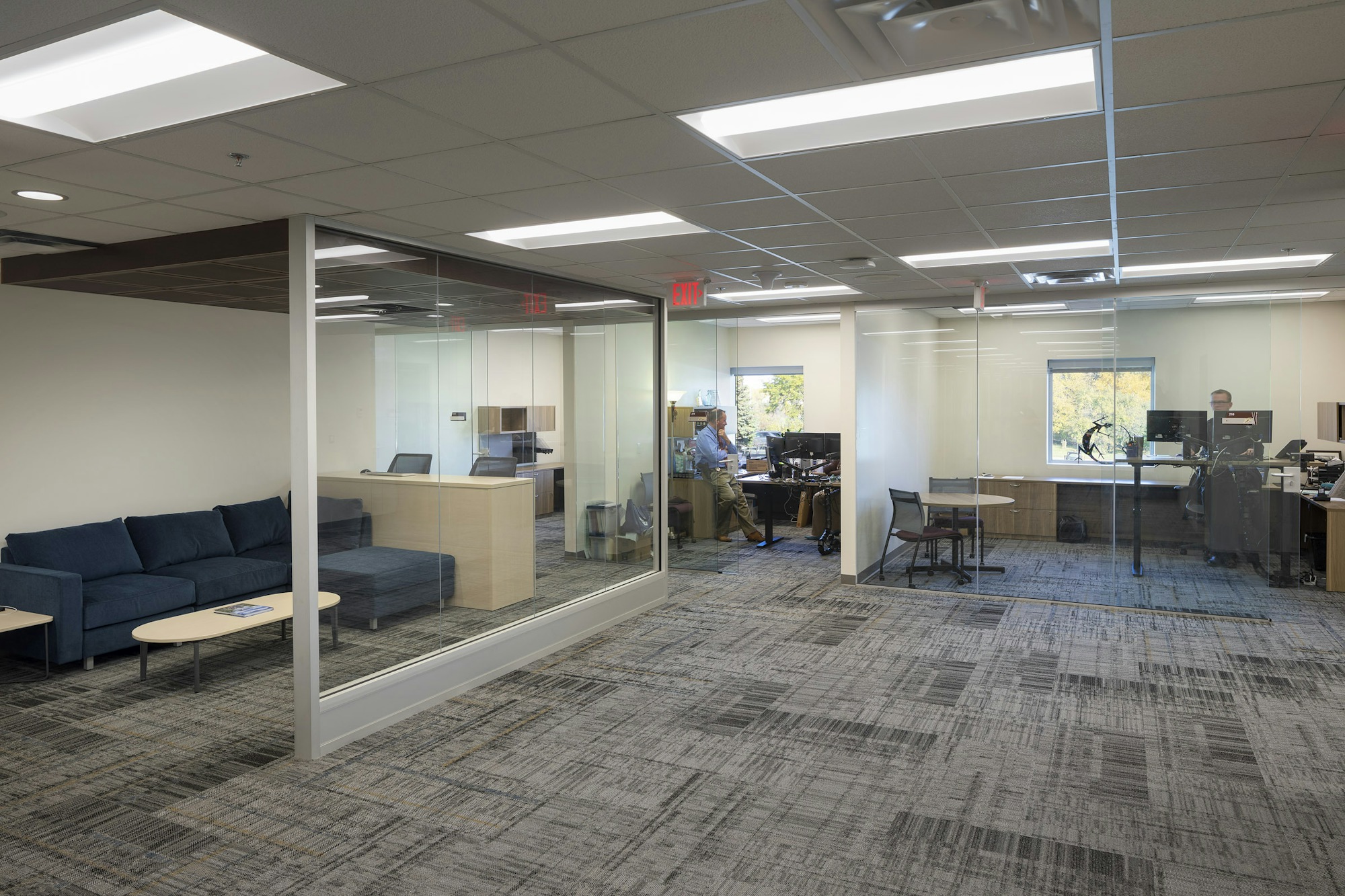
"Evidence suggests that exposure to law enforcement work is associated with increases in many forms of stress, including physical, psychosocial, and anticipatory stress. Officers are exposed to traumatic calls for service daily, including child abuse, domestic violence, car crashes, and homicides (1)." To assist in reducing the long-term health effects of law enforcement's daily responsibilities, we believe it is vital to design facilities that promote a collaborative culture and a stress-reducing environment. In the following, we identify potential risk factors for law enforcement personnel, highlight design elements intended to assist in law enforcement mental health, and provide several examples we've implemented in our clients’ facilities. This includes solutions for law enforcement stations, training facilities and other community-centric spaces.
Before analyzing the considerations for a health-centric law enforcement facility, it is vital to understand the risks associated with the profession. "Numerous studies have reported that compared with other professions, police officers are at increased risk for stress-related physical illnesses including heart disease, chronic pain, and insomnia, as well as for stress-related psychological problems such as depression, domestic violence, over-eating, drug and alcohol abuse" (2). Combining health risk factors with current events involving law enforcement, agencies have had increased issues with retainment. The nonprofit Police Executive Research Forum conducted a survey of nearly 200 police agencies in 2021 and found a 45% increase in the retirement rate nationwide (3). Although the job responsibilities associated with law enforcement can create long-term health risks, we believe there are ways designers can assist in reducing these stressors.
Creating optimal spaces that incorporate health-centric design considerations provides a step in the right direction towards de-escalating the realities of law enforcement service. Combining these considerations with the culture of a community creates a facility that is reflective of its values and long-term goals. Below are a few examples that we're implementing in our law enforcement facility designs to support good mental health.
Communal Environments
As humans, communication is a necessary element of our mental health. We believe that increasing opportunities for passive communication to occur in our facilities’ designs helps combat isolation and decrease the circumstances which can lead to long-term mental health illnesses. One example of a design solution that addresses increasing communication is our team's work with the City of Burnsville Police and City Hall. Faced with an increased demand for interaction amongst divisions, the renovation project focused on modernizing the police department with collaborative office environments and efficient reorganization of the department’s work spaces. Another example is our work currently underway within the City of Crystal's Police Department. Purposefully implemented in this design, the report writing room is located in the center of the facility. This creates a central commons area that allows for increased interaction opportunities amongst all employees.

Community Interaction
The design of a public service facility must create opportunities for purposeful interactions, both internally and externally. Law enforcement facilities should incorporate design elements that welcome community interaction, rather than hinder it. To continually enhance the relationship between community members and law enforcement, our team is committed to finding ways to increase synergy for all. For example, the City of Richfield City Hall, Police and Fire was intentionally located next to a community park to create additional avenues for community interaction. At the Village of North Aurora Police Department, a community room next to the main lobby was implemented to accommodate hosting both internal and external meetings. Creating additional spaces open to the public allows for another avenue of de-stigmatizing visiting a public safety facility. Thus, officers have more opportunities to interact with residents.

Scenario-Based Training
Training facilities should be innovatively designed to adequately prepare officers for the vast range of scenarios that they will encounter on-duty. The implementation of scenario-based training is one way entities can have an elevated level of knowledge on-duty. For example, City of St. Paul Police Department Training Facility aspires to create a positive identity for the police and connect the nearby St. Paul Police headquarters' culture with a state-of-the-art training facility. The training facility includes a reconfigurable scenario-training suite with movable walls and many simulated environments and a 12-lane firing range used for training and certification. The adaptable facility allows for an enhanced level of flexibility, creating avenues for more scenario-based training.

Enhanced Equity
An entity dedicated to serving the community, law enforcement facilities must be an equitable representation of the community. Law enforcement stations should ensure services are available to all. For example, in Minnetonka's Public Safety Facility, gender-neutral clothing storage, changing rooms and restrooms are utilized. This design solution ensures that all demographics have an area for their needs. Additionally, by designing locker rooms in this way, the facility accommodates any ratio of gender for staff.
Workplace Wellness
Creating a workplace environment that introduces and emphasizes healthy habits is a feature that is not exclusive to law enforcement, rather all workplace designs. To lower the risk of medical conditions later in life, workplaces should incorporate elements that assist an employee's overall health. This includes dedicated workout spaces, multi-purpose rooms that can be used for meditation and yoga, and decompression rooms for personnel following a high-stress incident. Facilities should feature water fountains with bottle-filling attachments to promote hydration. Natural light and views of the outdoors should also be considered to ensure the environment reflects the desired human behavior. Decisions related to materials and color should also be considered related to the effect on one's mental health. Ultimately, these spaces should provide opportunities to develop healthy habits that will reduce health risks long-term.
Law enforcement personnels’ daily roles and responsibilities can lead to an increased risk of long-term health issues. As a firm, we believe design plays a vital role in de-escalating these realities, ultimately leading to a safer and healthier community. We believe the considerations presented above provide tactical solutions to assist in the larger conversation of law enforcement in our communities. If you have any questions about our public safety design process, please feel free to reach out to our team at Wold Architects and Engineers (call 1-888-254-6789 or email info@woldae.com).
